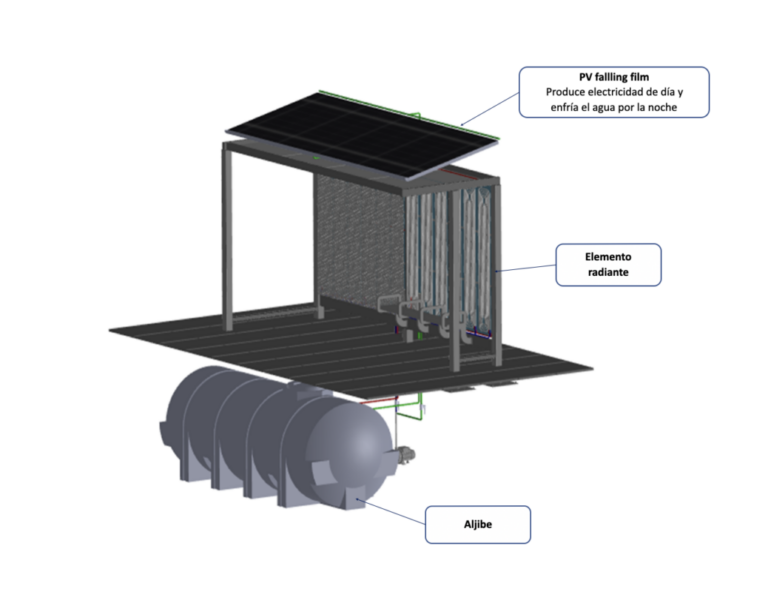From pv magazine Spain
A University of Seville research team has developed a bioclimatic bus stop that can lower surrounding temperatures by up to 20 C.
The system features four primary components: an underground cistern for nighttime water storage, a closed circuit that circulates water during peak heat, a top unit with solar panels providing energy for water pumping, and temperature sensors with pedestrian detection.
Upon detecting people, the bus stop activates its cooling mechanism, circulating water within the structure to expel cold air through tiny pores, similar in size to chickpeas, on the canopy's surface. This cooling process lasts for 10 to 20 minutes, which aligns with typical bus wait times.
“It's not like an air conditioner, which produces cold air; the structure of the bus stop emits freshness, as is the case with refrigerators,” said lead author José Sánchez. “Although it consists of more elements, its production is cheaper than common bus stops.”
Popular content
The researchers said thgey will continue to develop “smart” parasols and canopies to improve the design of these bus stops and to build pergolas that serve as a bioclimatic shelter for children in the schoolyards.
“We are installing a 1,000-square-meter roof at the Arias Montano school in Seville to block the sun and create a cool thermal sensation,” Sánchez said. “The children will be able to play and teach outside even in the hottest moments of the school period.”
The researchers presented the system in “Thermal conditioning of short-term stays. Radiant solution in a bus stop in Seville,” which was recently published in Science Talks.
This content is protected by copyright and may not be reused. If you want to cooperate with us and would like to reuse some of our content, please contact: editors@pv-magazine.com.



By submitting this form you agree to pv magazine using your data for the purposes of publishing your comment.
Your personal data will only be disclosed or otherwise transmitted to third parties for the purposes of spam filtering or if this is necessary for technical maintenance of the website. Any other transfer to third parties will not take place unless this is justified on the basis of applicable data protection regulations or if pv magazine is legally obliged to do so.
You may revoke this consent at any time with effect for the future, in which case your personal data will be deleted immediately. Otherwise, your data will be deleted if pv magazine has processed your request or the purpose of data storage is fulfilled.
Further information on data privacy can be found in our Data Protection Policy.